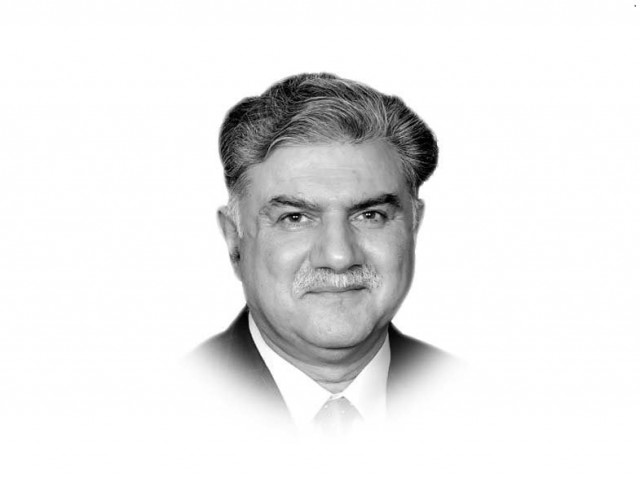Social life and governance in Mughal India
India was a big depository of global gold and silver in temple endowments and ornaments

Following the previous two columns, we continue to highlight little known aspects of Mughal India, as recorded by Dr Francios Bernier, a French doctor in his Travels in the Mogul Empire (AD 1656-1668) published in 1670. The work is based upon his 12-year stay during the reigns of Shah Jahan and his son Aurangzeb, under the protection of Danishmand Khan, a Mughal courtier.
Ninth, Mughal economy, trade and foreign relations. Portuguese explorer Vasco de Gama (born 1460 or 1469 AD) was the first known European to land at the Calicut Port on India’s Malabar Coast. He died in Cochin, India in 1524. Babur conquered India two years later in 1526. Commercial monopoly for decades on Indian pepper and cinnamon trading, through the ‘Spice Route’, boosted the Portuguese Empire. It would take another century, for other European powers, first the Dutch, then the English and later the French and the Danish (Danes) to challenge Portugal’s monopoly and naval supremacy in the Indian Ocean, to enter India.
By Dr Bernier’s time, the Portuguese traders, due to their avarice and bad conduct, had lost supremacy to the Dutch. He considered Dutch, who were seeking concessions in taxation, generally deceptive and exploitative in their trade relations with Aurangzeb. Foreign trade was a compulsion for Mughal India, as Emperor Shah Jahan’s revenue, for instance, seldom crossed six crore rupiah.
India was a big depository of global gold and silver in temple endowments and ornaments. International trade with Ottoman Empire, Persia and Europe brought the precious metals to India. Africa, India and Ottoman Turkey through Red Sea were favoured destination for slave trade. Ethiopian King presented Emperor Aurangzeb with 25 choicest slaves, some of young age who could be turned eunuchs for employment in seraglio (harem). Frank pirates and slave traders would boast that they converted more people into Christianity in a year than the missionaries would do in ten years. Surat port was used as embarkation point for Hajj pilgrims, hence revered by Muslims.
Persia enjoyed a special status in Mughal foreign relations as most Mughal nobility was of Perian descent. Hence, Persian Ambassador would be usually unencumbered by royal protocol in the Mughal Court.
Fresh and dry fruit from Afghanistan, Kashmir and Central Asia was available in the bazars of Delhi and Agra.
Tenth, corruption. In Mughal India, public office was for sale in accordance with the practice in vogue in contemporary Turkey and Persia, through costly presents to the emperor or governor. Officials thus appointed would then ensure wealth accumulation through public exploitation, tyranny and corruption of all kinds.
Dr Bernier considers the absence of right to own ‘private property’ as the major cause of potential decline of Asiatic powers like India, Persia and Turkey, etc. In India, the land was badly cultivated as it belonged to the sovereign/emperor. Since the state would keep the surplus under an exploitative Lagaan (rent) System, the cultivators had no incentive to work harder in order to enhance yield. As a result, there was no/miniscule middle class. People were either ultra-rich (nobility) or in tatters (general public). Famines, warfare and an aloof ashhrafiyya (elite) multiplied public miseries.
Eleventh. Dr Bernier’s observations on social life and travel. When Aurangzeb demanded jewels from his imprisoned father, Shah Jahan threatened to crush the diamonds with a hammer if he asked again. Aurangzeb was subsequently kind to him, allowing him to enjoy his great wealth with possible comfort.
Shah Jahan had conceived the idea of New Delhi, a new city named ‘Shah Jahan Abad’ or simply ‘Jahan Abad’. Private construction was mud and thatched straw, thus vulnerable to fires. Main urban centers (like in other Asiatic countries) would almost always have Muslim and Hindu fall-geers — astrologers, reinforcing superstition.
Bread (naan and roti) on urban tandoors was not good quality. Portuguese-owned mithai (sweat) shops were a common sight in Bengal. Elsewhere in India, these mithai shops lacked fly and dust hygiene. Singhara and Rau fishing was more common than other good varieties; and Indians generally dreaded entering cold waters. Eunuchs were particularly fond of fish for inexplicable reasons.
Imported Persian wine Shiraz (reaching Delhi from Bandar Abbas in 46 days) or Canary was available on some urban shops. Local brew was mainly Golkonda and Ahmedabad wine that tasted good. Illness among Europeans was attributed to excess of Bouleponge (Dutch for Punch), a Bengali araq or intoxicating drink, excessive heat and visitations to local women. Ganges water was taken along during journeys for its potable quality.
Doctors from Goa were respected for their prowess. Hindu medical practice was totally devoid of anatomy. Mughal practised bleeding or the modern-day hijama or cupping. Saltpeter (qalmi-shora or potassium nitrate) was used in Indian Ayurvedic medicine for treating blood pressure, asthma, indigestion, kidney stones and teeth sensitivity, besides cooling drinking water.
Indian artists were good at paintings except for proportions and facial expressions. Intermarriage was generally within own caste or profession and artisan class. Elephant combat, at times fatal for the animal and mahawat, was a popular spectacle. Sri Lankan elephants were considered the boldest.
Geography and cartography were not developed in Mughal India, where the earth was supposedly flat, and earthquakes consequence of the earth-supporting beasts (elephants) changing sides. First recorded earthquake in Kashmir occurred in 1552 AD.
Karawan-Serais resembled large barns with travelers and animals of all kinds sharing the same space. Ladakh was ‘Great Tibet’ for Mughals whereas, Baltistan ‘Little Tibet’. Skardu was the capitol of Little Tibet. From Skardu to Yarkand (China), the route crossed over Baltoro Glacier which, at 63 kms (today), is the longest glacier outside the polar region. Ladakh still practised ‘polyandry’ among sibling, with brothers having one wife as a measure to keep population in check due to scarcity of food.
Kashmir was even then famous for its tradition of weaving toosh or shahtoosh shawls, made of young lamb or rare Tibetan antelope wool. These shawls were later part of the yearly tribute by Maharaja Kashmir to the British. Many elephants, carrying Aurangzeb’s Party to Kashmir in 1665 for recuperation after protracted illness, tumbled while crossing Pir Panjal Pass (11,434 feet).
Dr Bernier found striking similarity between the people of Kashmir and Jews…reinforced by idioms like Takht-e-Sulieman, Mouse (Moses), Baramoula, etc. Kashmiris as quoted by Al-Beruini (973-1048 AD), the Uzbek scholar, was a country closed to outside trade. Kashmir generally allowed only a handful traders, mainly Jews and no Hindus from outside.
Monsoon intensity was directly proportional to the heat of the earth and rarefaction (reduction in density) of the air before the onset, just like it is today. Sea-farers in various tributaries of rivers around Sundarbans (177 rivers/rivulets) in Bengal would tie their boats away from the coast at night due to predatory lions and tigers. Arakan (Burmese) and Franks lived off piracy in the Bay of Bengal. Due to atmospheric clarity, it was possible to witness a spectacular ‘lunar rainbow’ at night.
Published in The Express Tribune, November 24th, 2022.
Like Opinion & Editorial on Facebook, follow @ETOpEd on Twitter to receive all updates on all our daily pieces.















COMMENTS
Comments are moderated and generally will be posted if they are on-topic and not abusive.
For more information, please see our Comments FAQ